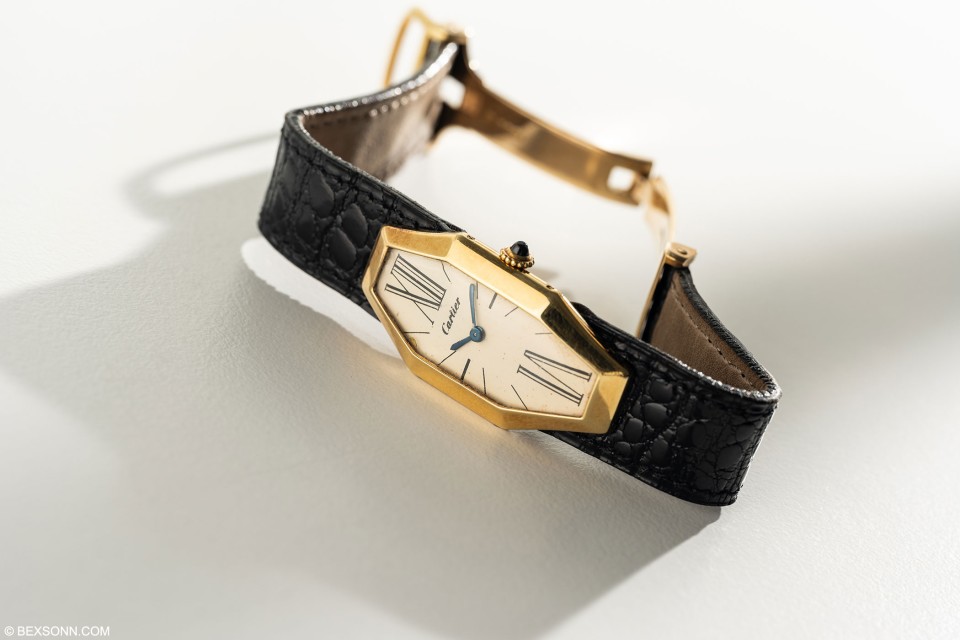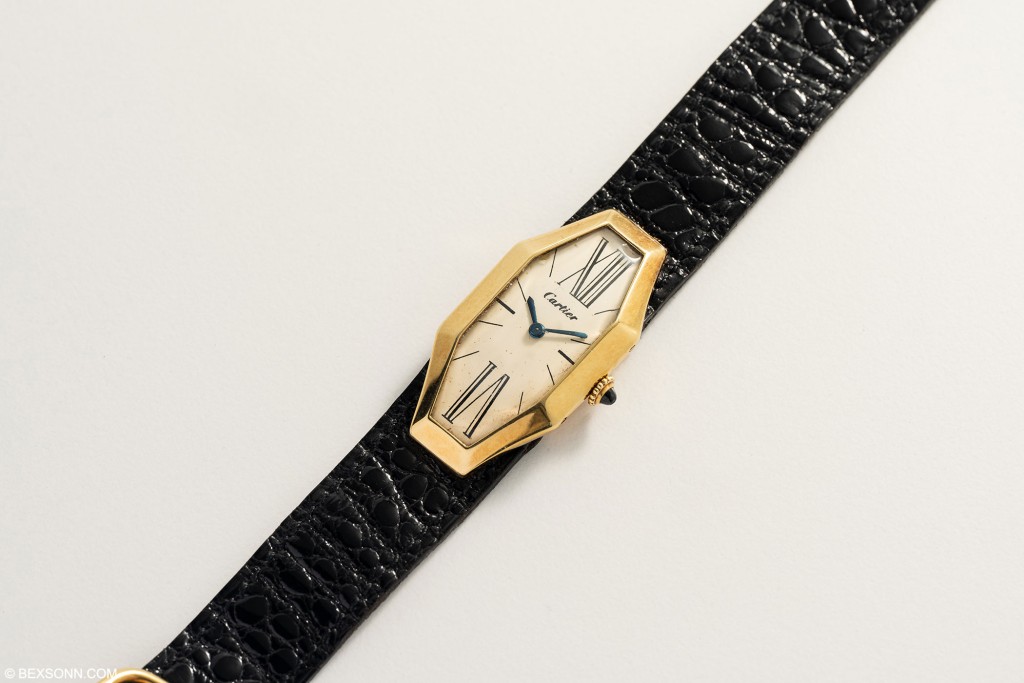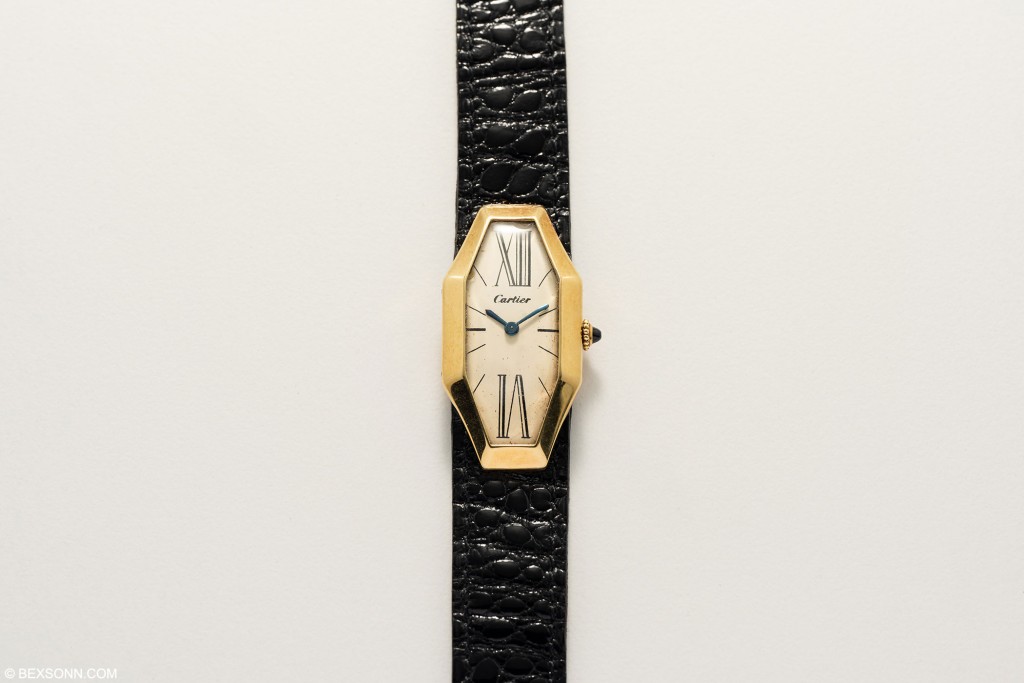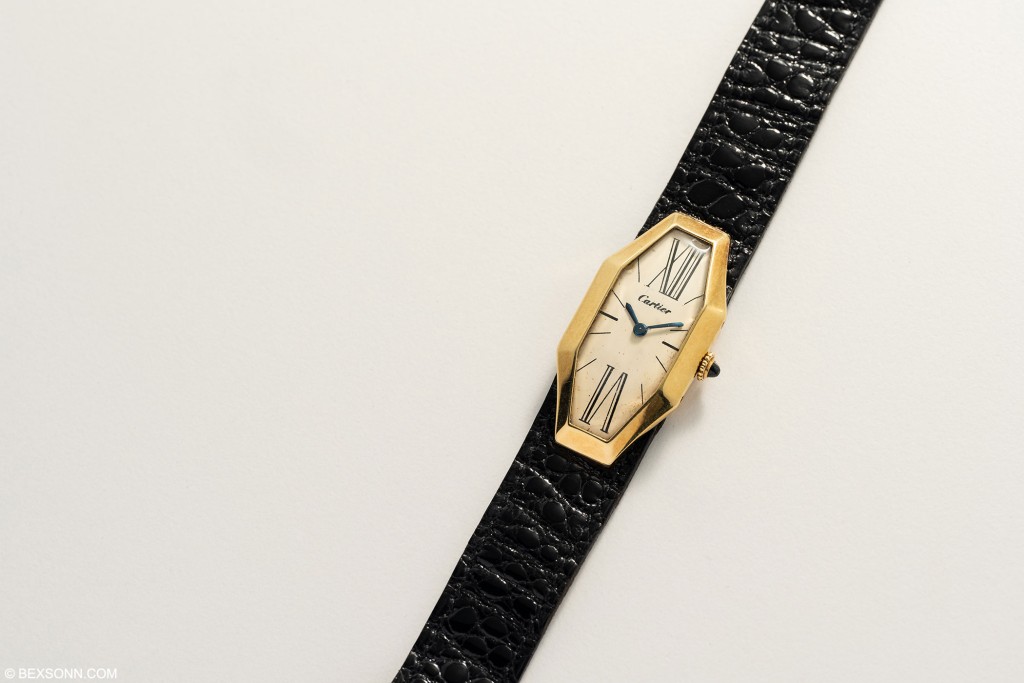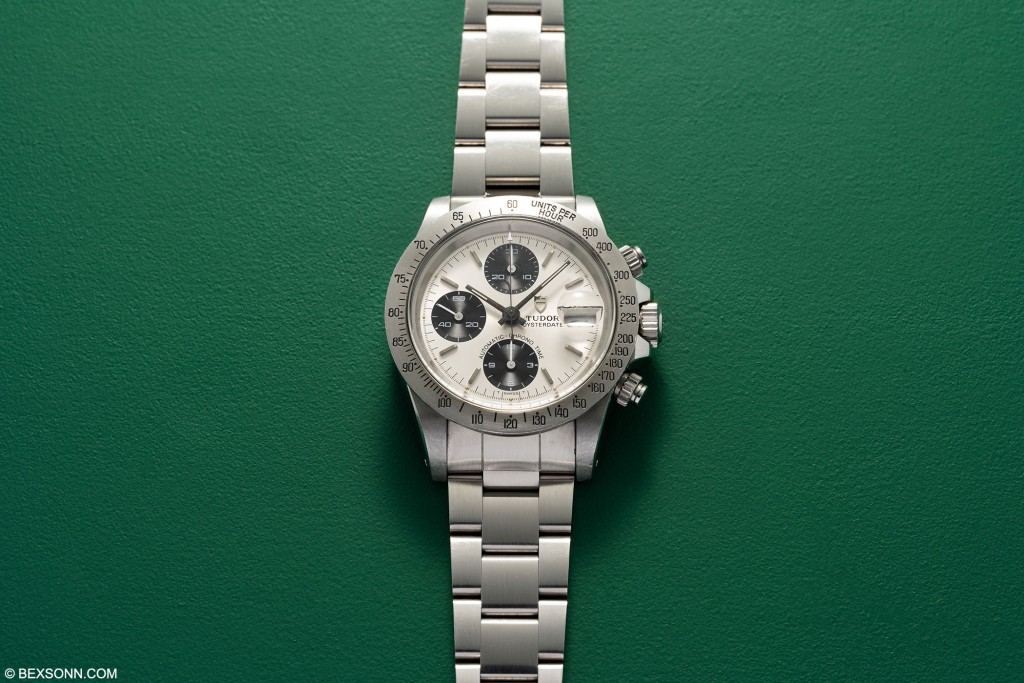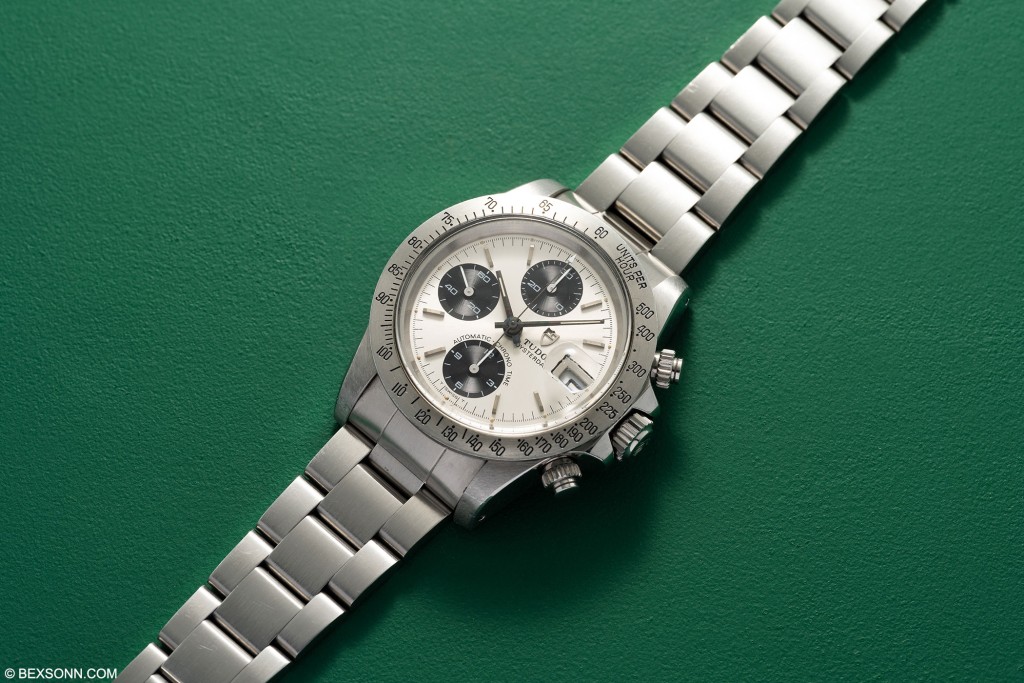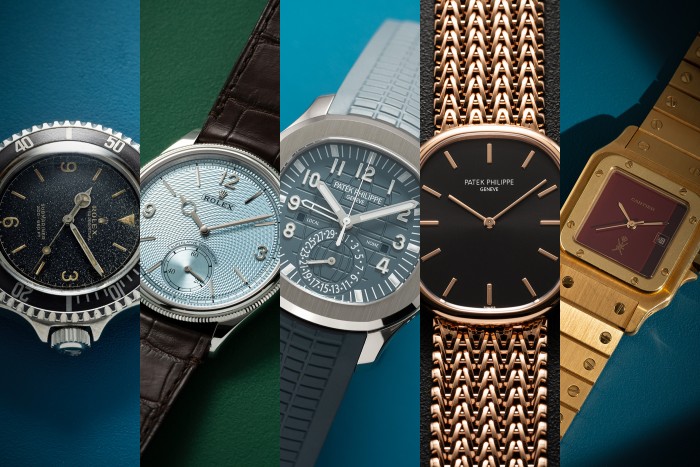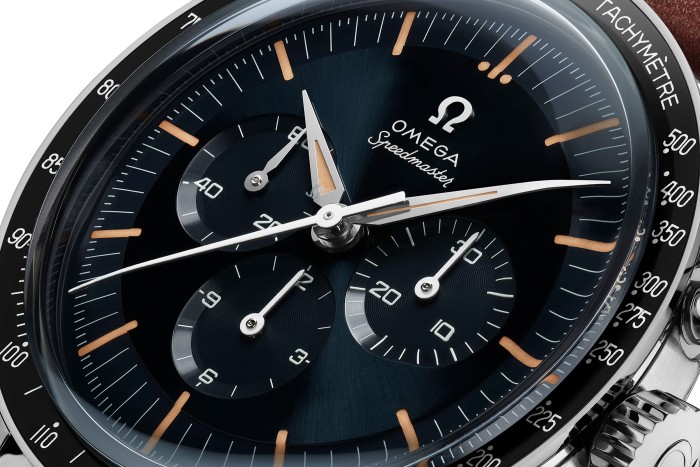The November auction serves as Watches of Knightsbridge’s final auction of the year, although it doesn’t feel like that long ago we were looking through their first 2023 catalogue. Naturally, we find ourselves drawn to highlight some of our favourite pieces from their impressive selection. One week ago, we had the privilege of visiting their offices in the historic Michelin building in South Kensington to personally look at the timepieces slated for the upcoming November auction. True to tradition, we’ve handpicked some standout lots and are excited to share our insights on these exceptional pieces.
CARTIER LONDON LOSANGE
Lot 31: The mention of wristwatches invariably evokes thoughts of Cartier. It was Louis Cartier who not only left an indelible mark on the watch industry but also played a pivotal role in popularizing the wristwatch. Nevertheless, Louis was part of a trio of remarkable siblings, alongside Jacques and Pierre. These three brothers had a significant presence in different corners of the Western world – Pierre found his way to New York, while Jacques set his course for London. It was in the heart of London that some of the most daring and avant-garde designs were conceived. However, it wasn’t until 1966, under the astute guidance of Jacques’ son, Jean-Jacques, that the Cartier London branch truly forged its own path, giving birth to uniquely designed watches. For many devoted Cartier enthusiasts, London represents the spiritual home of Cartier’s more audacious designs, a place where traditional craftsmanship seamlessly intertwines with innovation.
Created by the Cartier London artisan are iconic timepiece such as the Crash, the Pebble (such as this example that sold at Phillips Geneva Watch auction recently, the Oval and the Octagonal sold a couple of years ago by Watches of Knightsbridge. And then there is this: the Cartier London Losange, which differs greatly from any other elaborate model seen by the Maison, most featuring curved cases. This 1970s London Losange features an elongated octagonal 18-carat yellow-gold case, with 8 uneven sides and Cartier’s signature gold crown with a sapphire at 3 o’clock.
Like most London models, the signature Cartier dials were reworked and in wanting to create a simpler layout, the chemin de fer (railway) chapter rings were abandoned. However, like the Baignoire, Pebble, Oval, Oval Maxi and Crash, the use of Roman numerals were retained. Again, like many special Cartier pieces such as this, it is important to mention that these models were produced in very small quantities. Pieces such as this were made in small batches and this is believed to be one of 6 known examples, that was made in the revered Wright and Davis London workshop owned by Cartier and overseen by Jacques Cartier.
It’s important to note the originality of the timepiece; the number 9914 is stamped both on the case and on the original clasp, showing that the watch remained with its original buckle throughout its whole life. Furthermore, there are London hallmarks for 1971 on the clasp, as well as the “JC” stamp for Jacques Cartier. And like many of the Cartier London pieces created during this period, at the heart of this Lonsange is the manual-wind Jaeger-LeCoultre calibre 845.
Estimate: £80,000 – £120,000
TUDOR “BIG BLOCK” CHRONOGRAPH
Lot 127: I’ve long held a soft spot for Tudor, yet it wasn’t until recently that I truly began to appreciate their “Big Block” chronographs. These timepieces made their debut in 1976 as part of the third series of Tudor chronographs, marking a significant leap in both innovation and size. Distinguishing itself from its larger sibling of that era, the Big Block embraced automatic movements, making them the pioneering self-winding chronographs within the Wilsdorf group. Notably, this milestone occurred well over a decade before Rolex introduced their inaugural automatic Daytona chronograph, the Zenith-powered reference 16520. This marked a significant moment for Tudor. The moniker “Big Block” originated from the necessity to redesign the rotor of the self-winding mechanism, which, in turn, required a deeper watch case, hence the endearing term among collectors, “Big Block.”
The first Big Block chronographs were the 9400 series, which ran until approximately the late 1980s. In the late 1980s these were replaced by the 79100 series; however, these pieces had a more Daytona-esque appearance. That said, they still retained their deeper “Big Block” cases. This particular 1991 Big Block features a sunburst silver dial and contrasting black chronograph registers, positioned at 6, 9 and 12 – with a date aperture placed at 3 o’clock. It also sports a steel tachy-o-meter bezel, much like Daytonas from the same period. Furthermore, this example appears to be in overall excellent condition and has a peculiar engraving on the case back. You’ll notice on the case back is features an inscription that reads “ECOLE D’HORLOGERIE DE GENEVE”, denoting that this is indeed a school watch. For those of you who are unaware, school watches are pieces that students have chosen to work, which usually includes them making an improvement or adjustment to said chosen watch – hence the reason the movement in this watch remains unsigned but has been numbered by the watchmaker.
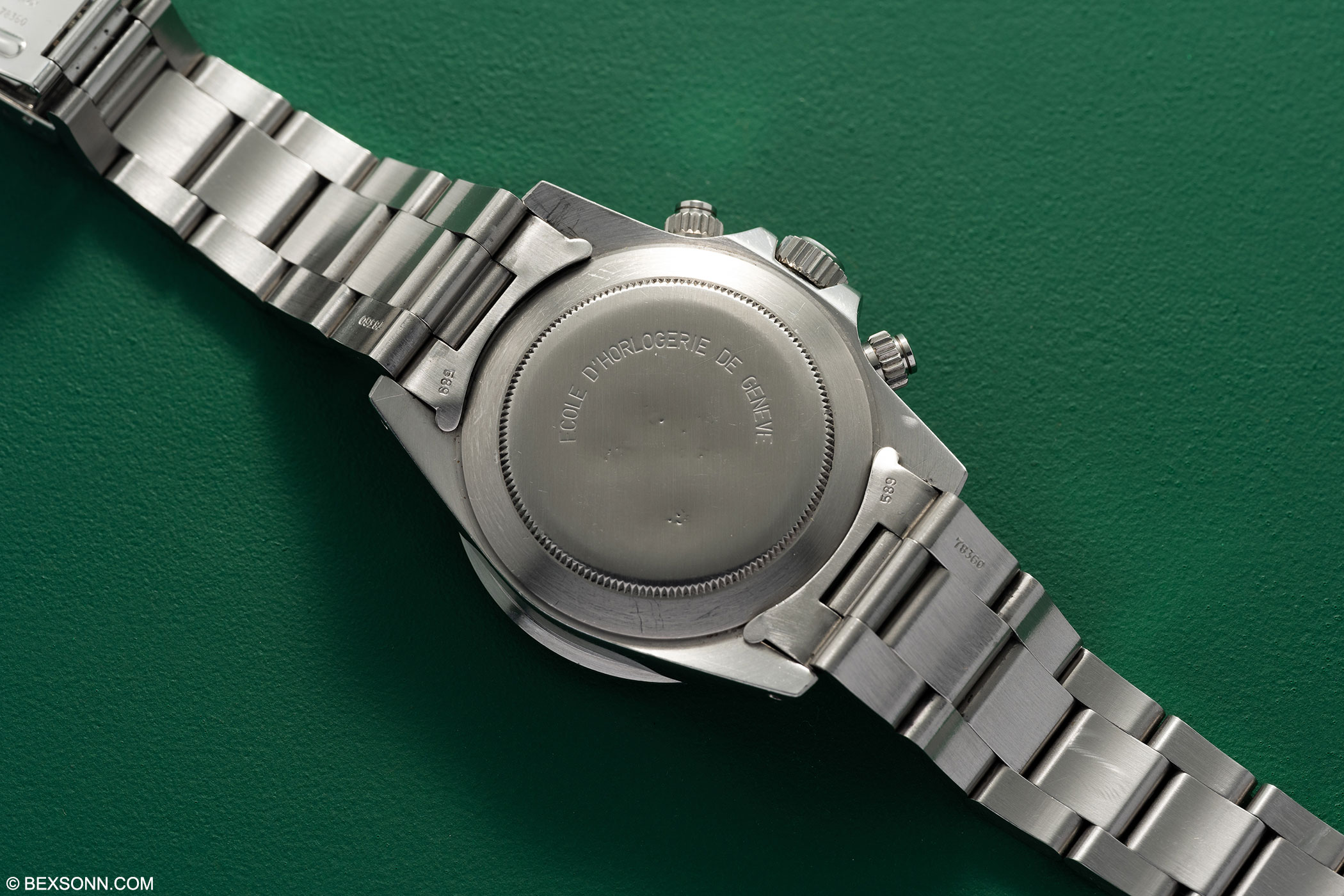
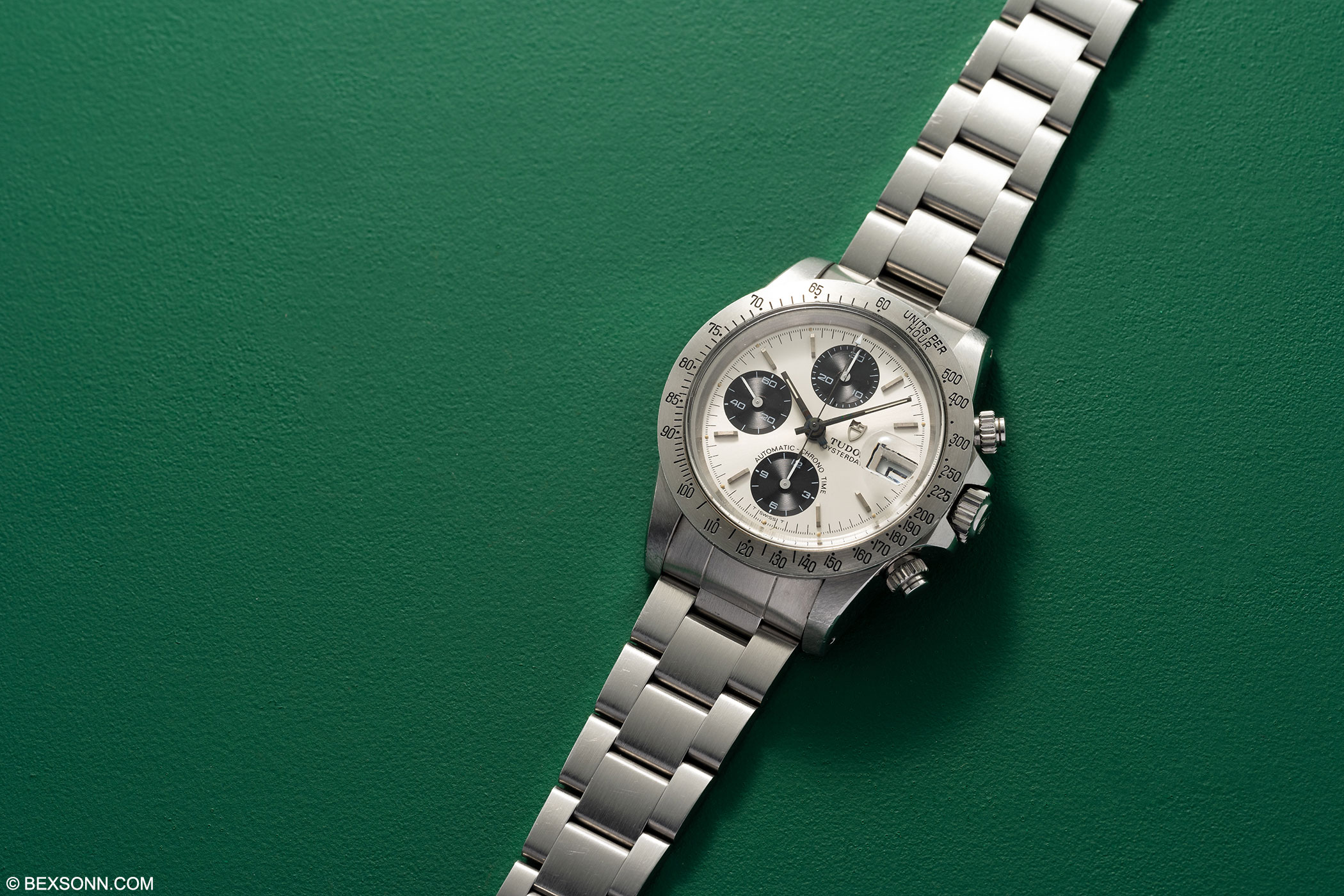
It’s essential to underscore that the Big Block presents an enticing opportunity for collectors to acquire an Oyster chronograph at an exceptionally reasonable price point. In contrast to the Daytona’s 36mm case, the 40mm Big Block may appear slightly smaller, but this size lends it a contemporary presence on the wrist while retaining a classic aesthetic. While there has been considerable interest in the earlier two-register chronographs, such as the coveted ‘Homeplate’ and ‘Monte Carlo,’ among Rolex and Tudor collectors, it is my humble opinion that the three-register Tudor chronographs continue to maintain a somewhat understated status in the collector community.
Estimate: £6,000 – £7,000
The Watches of Knightsbridge auction will take place on the 18th November 2023 at 14:00 BST, to review the full catalogue visit watchesofknightsbridge.com.
